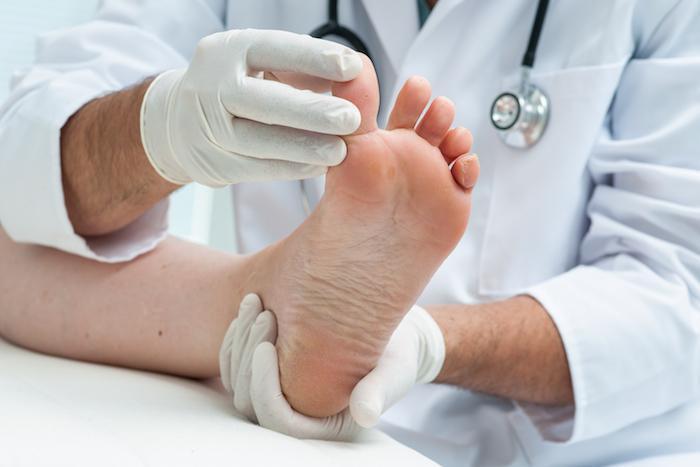Stubbed Your Toe? Cracking the Code Between Broken and Bruised
The human body is a remarkable machine, but sometimes, even the sturdiest parts can take a hit. Our toes, those valiant little soldiers that carry us throughout the day, are particularly prone to injury. After stubbing your toe, the throbbing pain can leave you wondering: “Is it broken or just bruised?”
Fear not, intrepid toe-stubber! This comprehensive guide delves into the signs and symptoms that differentiate a broken toe from a simple bruise. We’ll explore effective home remedies for both scenarios, and discuss when seeking medical attention becomes crucial.
Understanding Broken Toes and Sprains:
First, let’s differentiate between a broken toe (fracture) and a sprain. A broken toe occurs when a bone in the toe fractures partially or completely. A sprain, on the other hand, involves damage to ligaments, the tissues connecting bones.
Signs of a Broken Toe:
Here are some key indicators that your toe might be broken:
- Intense Pain: A broken toe typically causes immediate and intense pain that worsens with pressure or movement.
- Swelling and Bruising: The area around the break will likely swell and bruise, sometimes significantly.
- Deformity: In some cases, a broken toe might appear visibly crooked or bent at an unnatural angle.
- Difficulty Walking: Putting weight on the affected toe can be excruciating, making walking or even standing difficult.
- Numbness or Tingling: Sometimes, a broken toe can cause numbness or tingling in the toe or surrounding area.
- Popping Sound: In some cases, you might hear a popping sound at the time of the injury, indicating a fracture.
Signs of a Bruised Toe:
A bruised toe, while painful, is generally less severe than a break. Here’s what to watch for:
- Pain: The pain will likely be present, but usually less intense and throbbing compared to a break.
- Swelling and Bruising: Similar to a broken toe, swelling and bruising are common, but typically less pronounced.
- Tenderness: The area will be tender to the touch, but deformity or extreme difficulty walking is less likely.
When to Seek Medical Attention:
While some bruised toes can heal well at home, seeking medical attention is crucial in certain situations:
- Suspected Break: If you suspect a fracture based on the severity of pain, swelling, or deformity, see a doctor for an X-ray to confirm the diagnosis and get proper treatment.
- Prolonged Pain: If the pain persists for more than a week or worsens despite home care, consult a doctor.
- Numbness or Tingling: Persistent numbness or tingling can indicate nerve damage and requires medical evaluation.
- Open Wound or Infection: If the toe has an open wound or shows signs of infection (redness, pus), seek immediate medical attention.
- Inability to Bear Weight: If you cannot put any weight on the affected foot, see a doctor to assess the injury’s severity.
Home Remedies for Bruised Toes:
If you suspect a bruised toe, here are some home remedies to promote healing and pain relief:
- RICE: Rest, Ice, Compression, and Elevation are your allies. Rest the injured toe, apply ice packs wrapped in a towel for 15-20 minutes at a time (several times a day), gently compress the area with an elastic bandage, and elevate the foot above your heart to reduce swelling.
- Pain Relief Medication: Over-the-counter pain relievers like ibuprofen or acetaminophen can help manage pain and inflammation.
- Epsom Salt Soaks: Soaking your foot in warm Epsom salt baths can promote relaxation and reduce swelling.
Additional Tips for Healing:
- Protect Your Toe: Wear comfortable, closed-toe shoes to prevent further injury while the toe heals.
- Buddy Taping: In some cases, gently taping the injured toe to the next toe can provide support and stability.
Preventing Toe Injuries:
An ounce of prevention is worth a pound of cure! Here are some tips to minimize the risk of stubbed toes:
- Wear Proper Footwear: Choose well-fitting shoes with good traction to prevent slips and falls.
- Mind Your Surroundings: Pay attention to where you’re walking, especially in dimly lit areas or cluttered spaces.
- Declutter Your Space: Minimize clutter at home to avoid stubbing your toe on furniture or objects on the floor.
Conclusion:
Distinguishing between a broken and bruised toe can be tricky. By understanding the signs and symptoms, you can make an informed decision about seeking medical attention or implementing effective home remedies.






More Stories
Is there a lifetime limit on epidural steroid injection?
What is Section 20 of the Motor Accident Insurance Act (Queensland)?
Where to Watch USMNT vs Jamaica National Football Team